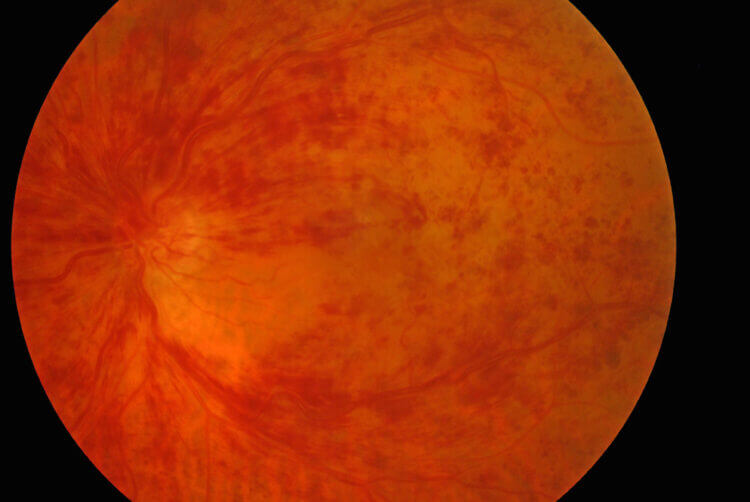
The retina is a transparent tissue located inside the eye. The retina is similar to the film in the back of a camera. It receives visual images and transmits the information to the brain via the optic nerve.
The retina receives its nourishment from tiny arteries. The blood in these arteries passes through small capillaries and eventually passes back to the heart via the retinal veins. In some individuals, the main “trunk” of the retinal artery may become plugged and this will cause sludging of blood within smaller tributaries of the central retina (sludging also occurs within the capillaries, as well). The central retinal vein occlusion is, effectively, a localized “stroke” of the eye.
There is typically moderate to severe loss of vision following a central retinal vein occlusion. The loss of vision is usually due to swelling of the retina. Sometimes, the vision may improve spontaneously. In most cases, however, the vision remains disappointingly poor. New treatments have now offered more hope to patients with a central retinal vein occlusion. If the vision remains poor for a period of weeks or months, your doctor may suggest an injection of intraocular Kenalog or, less often, intraocular Avastin. In addition, laser treatment may be suggested following these injections. The purpose of this treatment is to prevent progressive visual loss and to attempt to provide improvement in vision. Often, repeat injections are required.
In some cases of severe vein occlusion, “rubeosis” may develop. This means that small blood vessels begin to grow on the surface of the iris (the colored part of the eye). These blood vessels can cause severe damage to your eye. Your ophthalmologist may recommend laser treatments if these small blood vessels are beginning to form. The purpose of the laser treatments is to prevent the development of neovascular glaucoma (a serious problem which results in the painful elevation of intraocular pressure). Unfortunately, the vision usually does not improve with the laser treatment.
The most common cause of central retinal vein occlusion is hardening of the arteries (atherosclerosis) or high blood pressure. If high blood pressure is present, treatment of hypertension is indicated. Glaucoma is known to be a predisposing factor in the development of some central retinal vein occlusions. If you have glaucoma, your doctor may wish to treat this with special eye drops designed to lower intraocular pressure.
